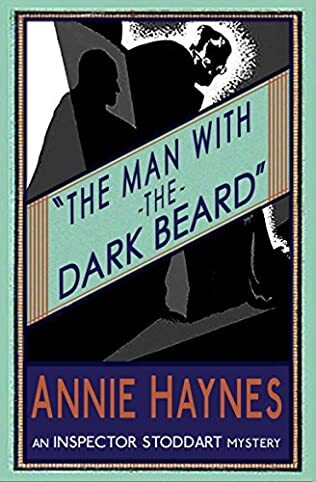The Man With The Dark Beard

A review of The Man with the Dark Beard by Annie Haynes – 20230330
Annie Haynes is a Golden Age detective fiction writer I have not come across before and, if the excellent introduction to this edition is to be believed, very few had until Dean Street Press decided to reissue her work in 2015. The Man with the Dark Beard was published a year before her death and introduced Inspector Stoddart to her reading public. There are four books in the series, two published posthumously, the last completed by an unknown fellow writer. It is hard to believe in this snap-happy era that there is no surviving photograph of her, and she lived a large part of her life as an invalid.
The book is part murder mystery and part romance with a peculiarly Victorian melodramatic feel about it. It was written at a time when the wearing of beards was not fashionable and so it seems an odd choice of disguise for someone determined to commit murder most foul. Haynes presents the reader with a moral dilemma that her murder victim is wrestling with; what should someone do if they discovered a crime that had been committed that had never been discovered and never even suspected?
Dr John Bastow in mentioning this professional and moral dilemma to Sir Felix Skrine K.C, the cleverest criminal lawyer in the country, sets off a chain events that leads to his murder and more. On the day that he is found murdered, shot inside his own locked office, he had already refused his assistant Basil Wilton’s request for the hand of his daughter, Hilary, dismissing him on the spot for his audacity. There are precious few clues, save for a letter Bastow was writing to Skrine about their conversation, a missing box in which the findings of his scientific research were held, and near the corpse a scrap of paper which bears the legend “it was the man with the dark beard”.
Wilton is the prime suspect, but before Stoddart has got much further with his investigation, the book lurches in a slightly unexpected direction, when Skrine, acting as Bastow’s executor and in loco parentis to Hilary and her invalid brother, Fee, sells the family home, uproots them to a village where his wife is buried, thwarts Hilary’s romantic aspirations as he has designs on her himself, and is reluctant to finance Fee’s treatment. In other words, he plays the wicked guardian so beloved of Victorian melodramas.
We get back on to the murder track when Hilary learns that Wilton has now married Bastow’s former secretary, who has mysteriously come into money. Within weeks of the marriage, his new wife is murdered, again Wilton being the last to see her alive. It looks black for Wilton especially as some evidence is found that seems to incriminate him. He stands trial but the jury cannot agree a verdict. A retrial is ordered which buys Stoddart, who was never convinced of Wilton’s guilt, to find the evidence he needs to bring the real culprit to justice.
The case revolves around theatrical beards, poison, a bit of blackmail, and a marriage that had gone sour. In truth, the culprit is easy to spot, but it is an enjoyable, light read from a writer that deservedly has been rescued from obscurity. The rest of her murder mysteries are on my ever-growing TBR pile.



